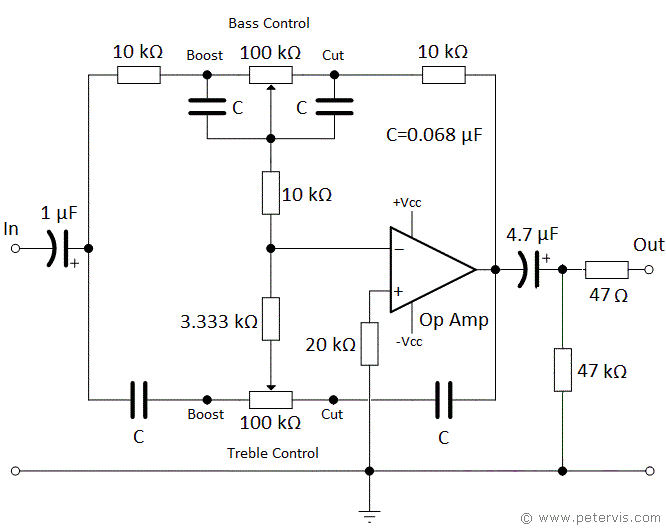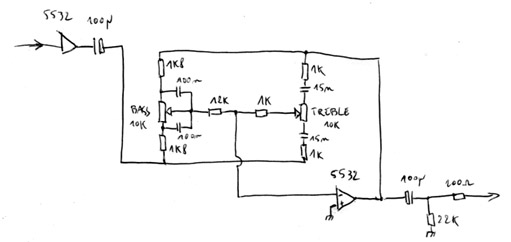saint gillis
Well-known member
Hello, I want to make a Baxandall Bass & Treble EQ, something quite similar to this :

In his book, D.Self says there's should be no DC flowing through the pots if we use TL07X, but that we should add DC blocking capacitors if we use NE553X ... I guess DC can't flow through the treble pot anyway... But it can flow through the bass pot..
Where to implement these DC blocking caps in such a circuit?

In his book, D.Self says there's should be no DC flowing through the pots if we use TL07X, but that we should add DC blocking capacitors if we use NE553X ... I guess DC can't flow through the treble pot anyway... But it can flow through the bass pot..
Where to implement these DC blocking caps in such a circuit?



